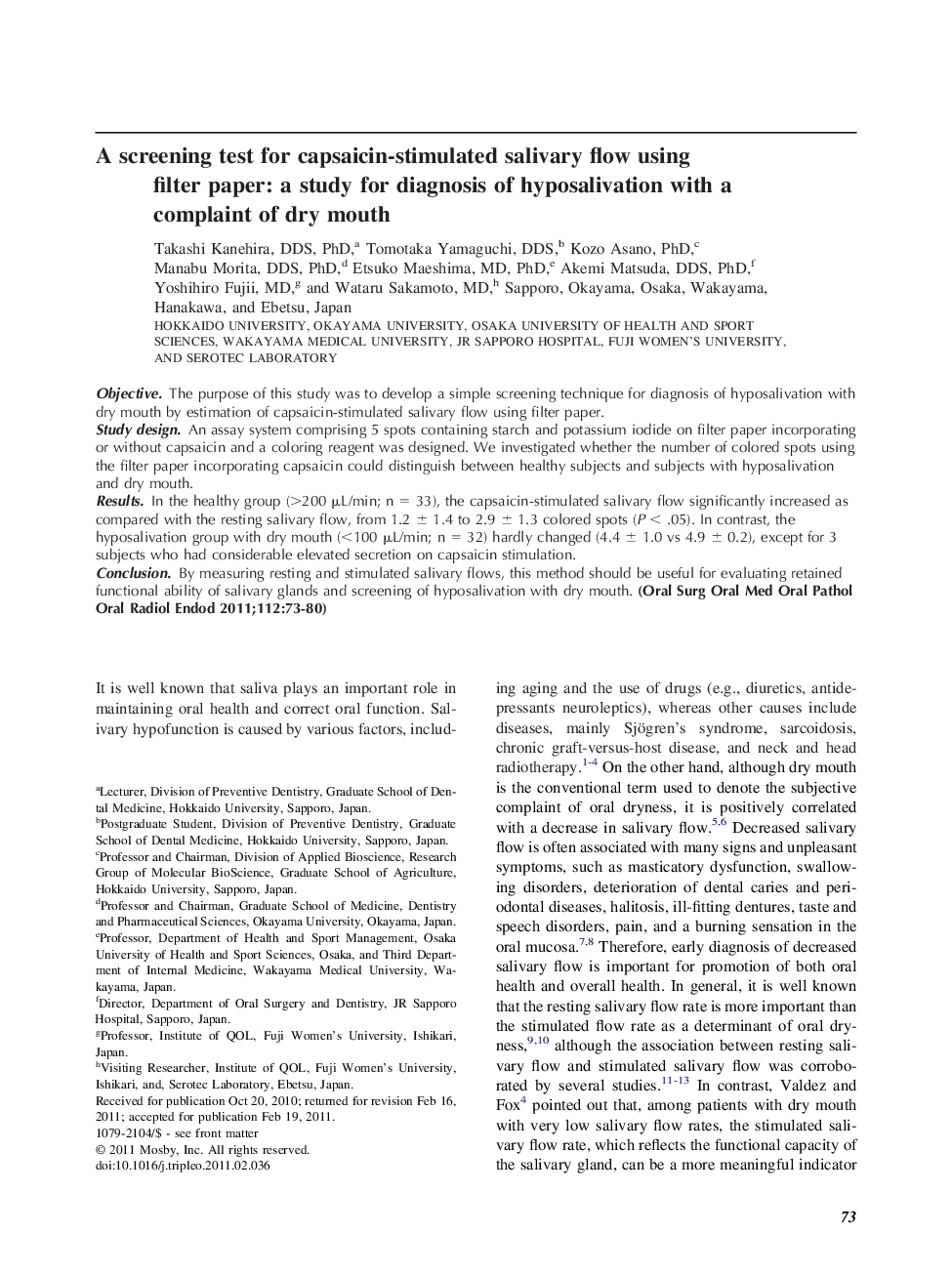| Article ID | Journal | Published Year | Pages | File Type |
|---|---|---|---|---|
| 3166986 | Oral Surgery, Oral Medicine, Oral Pathology, Oral Radiology, and Endodontology | 2011 | 8 Pages |
ObjectiveThe purpose of this study was to develop a simple screening technique for diagnosis of hyposalivation with dry mouth by estimation of capsaicin-stimulated salivary flow using filter paper.Study designAn assay system comprising 5 spots containing starch and potassium iodide on filter paper incorporating or without capsaicin and a coloring reagent was designed. We investigated whether the number of colored spots using the filter paper incorporating capsaicin could distinguish between healthy subjects and subjects with hyposalivation and dry mouth.ResultsIn the healthy group (>200 μL/min; n = 33), the capsaicin-stimulated salivary flow significantly increased as compared with the resting salivary flow, from 1.2 ± 1.4 to 2.9 ± 1.3 colored spots (P < .05). In contrast, the hyposalivation group with dry mouth (<100 μL/min; n = 32) hardly changed (4.4 ± 1.0 vs 4.9 ± 0.2), except for 3 subjects who had considerable elevated secretion on capsaicin stimulation.ConclusionBy measuring resting and stimulated salivary flows, this method should be useful for evaluating retained functional ability of salivary glands and screening of hyposalivation with dry mouth.
